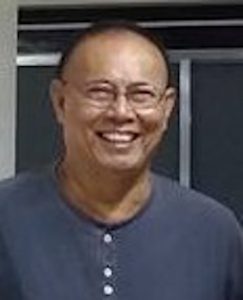 EVER since the late 90s we had been espousing the idea of having Davao City divided into two.
EVER since the late 90s we had been espousing the idea of having Davao City divided into two.
Meaning there will be two local government units once another city is chipped out of the largest city in
the country.
Our espousal of the idea seemed to have strengthened when at one time during the term of the late
Congressman Manuel “Nonoy” Garcia talks surfaced that he was planning to initiate a bill seeking the
creation of another city out of the present one.
Then latter, during one of the terms of the late House Speaker Prospero “Boy” Nograles there were
audible whispers that a bill was being cooked out again for the division of Davao City into two.
None of those however, even started first base. That is, introduction of such bill in the House or its
proper committees. As to why the proposals merely were at the “gossip” level it was because the local
government never manifested even just a semblance of support. Understandable of course because
while many, especially among councilors, those aspiring to run for any elective office in the new city,
were looking forward to a better opportunity of winning, none of them had the courage to openly
manifest their approval of the move.
They seemed too scared to court the ire of the ruling gods of the city that they just simply kept their
mouths shut. Clearly however, the ruling politicians during those years and even until these days are far
from willing to give up even an inch of their strangle-held political turf. And it cannot be denied that
until today every Tom, Dick and Harry of ambitioning politicians in the city are currying favor from the
gods who are politically dominant in this large city.
Now, we feel awkward hearing about cries of citizens blaming the highly centralized government of
what many call as “Manila Imperialism” as the cause of the inequity in the dispersal of development.
After all, our set-up in Davao City cannot be far different from that of the national government. The city
is also “centralized” in the sense that most, if not all, government transactions are consummated in the
city center as local government offices are located in the central district. Yes, there are district offices of
local government departments but transactions thereat are limited to certain forms of services. Besides,
even the district offices are a good distance from constituents residing in the highlands and other rural
areas.
Barangays like Buda, Tagurano, Paquibato or Tapak are quite far from the city center or even from
the district offices and the absence of regular transportation system plus dilapidated roads leading to
the interior villages. Thus, it is easy to imagine the difficulty of constituents doing transactions with their
government and some private concerns under the present undivided Davao City.
And having worked for the communities in Davao City and interacted with the people thereat for
several years, we can proudly claim that we have one way or another, lived the kind of life they have.
It is this experience that keeps our hope of having another city created out of the present Davao City
flickering. We are looking forward to the day when there will be one or two congressmen, and probably
the "silent“ backers of the idea from among our local officials will have the courage to even just “test”
the waters of initiating moves to the effect.
We know that in terms of population, in income and much more land area, either the new city or the
one from where the new LGU is cut out from can easily meet as requirement for the process.
We are very positive that should this division happen a lot of problems now faced by the single city
will be totally solved. The burgeoning traffic for one will be wiped out.
Why and how? With the new city the people residing in areas within the territory of the new LGU will be transacting with the new city offices which we are certain will be housed in a new city hall established in a new city center way from the present one. Therefore new public utility vehicle routes will be established resulting to a huge volume of vehicles out of the present routes leading to the present main business center.
In terms of infrastructure projects the areas that are now less given attention due to distance may
now have a better chance of having its potentials discovered and developed. This is so because the new
LGU leaders will have better chances of seeing the real situation of the barangays that would now be
closer to where they are holding offices.
And in all certainty, where huge number of people is expected to converge with regularity, businesses
of all kinds are not far behind. Where a new LGU comes in policies are also crafted to entice investors.
Therefore, more job opportunities are made available to residents of the new city.
If all of these are possible scenarios in a new city out of the giant Davao would it be difficult for our
congressmen and other local leaders to consider the idea?
